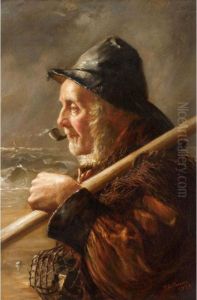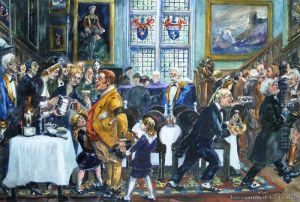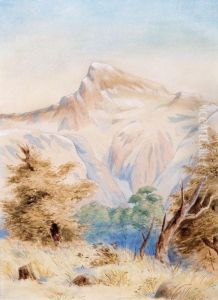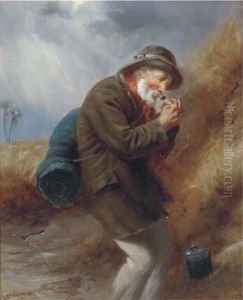Thomas Selby Cousins Paintings
Thomas Selby Cousins was an English engraver and printmaker, born in 1840 and passing away in 1897. His work spanned across the Victorian era, a period known for its rapid industrial advancement, societal changes, and a flourishing of the arts and culture. Cousins was part of the broader movement of British art during the 19th century, which saw a significant evolution in the styles and subjects of visual arts, influenced by Romanticism, the Pre-Raphaelite Brotherhood, and later by Realism and Impressionism.
Cousins' contributions to the art world were primarily in the realm of engraving, a technique that involves incising a design onto a hard, usually flat surface, by cutting grooves into it. This method was essential for creating prints and illustrations for books, magazines, and newspapers, which were the primary means of mass communication at the time. Engraving required not only artistic skill to create the initial design but also technical precision to execute the cuts necessary for printing.
Though detailed records of Cousins' specific works and achievements are sparse, it is known that engravers of his time often worked on reproductions of paintings, portraits, and scenic landscapes. These works played a crucial role in making art accessible to the Victorian public, who otherwise might not have had the opportunity to visit galleries or own original artworks. Cousins, like many of his contemporaries, would have been involved in translating the works of famous and upcoming artists into engravings that could be distributed widely, contributing to the era's cultural dissemination and education.
Cousins' career reflects the complexities and challenges of being an artist in a rapidly industrializing world. The technological advancements of the 19th century introduced new methods of production and reproduction of images, such as lithography and photography, which eventually supplanted traditional engraving as the preferred techniques. Despite this, Cousins and his fellow engravers played a vital role in the art ecosystem of their time, bridging the gap between the traditional handcrafted art forms and the emerging modern, mechanized methods.
Thomas Selby Cousins' death in 1897 marked the end of a career that was emblematic of a transitional period in art history. His life and work serve as a testament to the enduring value of craftsmanship and the role of engravers in the broader narrative of 19th-century art. Though specific details of his individual contributions may not be widely known, the significance of his profession and its impact on the accessibility and dissemination of art during the Victorian era remains undisputed.



